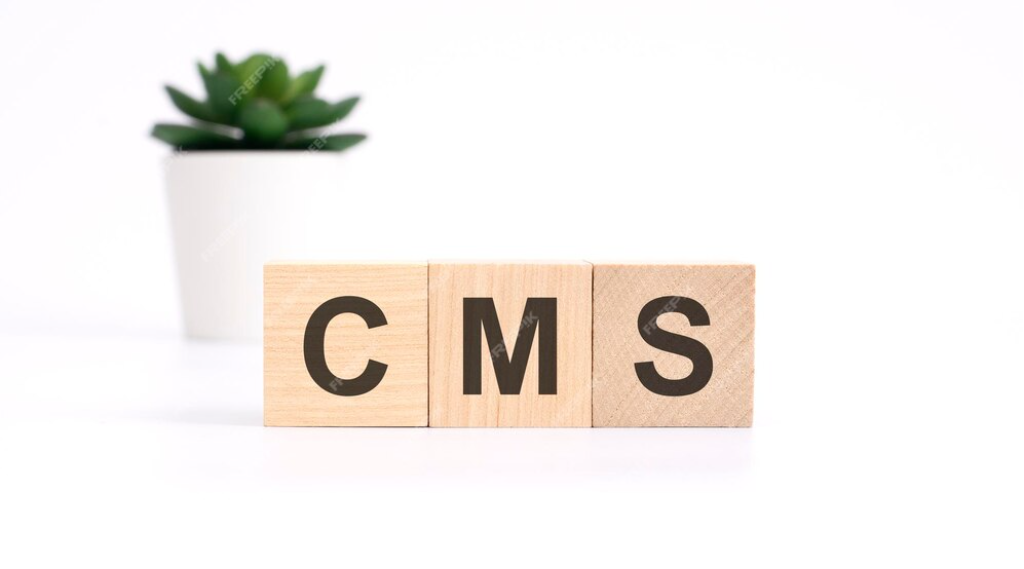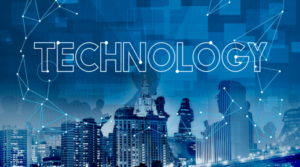A Content Management System (CMS) helps users build and manage websites design without coding. It’s cost-effective and accessible. Popular CMS platforms are WordPress, Magento, Drupal, Joomla, and Prestashop. CMS technology has evolved, introducing headless CMS. What is a headless CMS? Let’s explore the basics.
Headless Content Management System
A headless Conten Management System separates the front-end from the back-end. Content is stored and managed in the back-end. Unlike traditional Content Management System, content isn’t tied to presentation. It allows content to be delivered across multiple platforms, such as websites, mobile apps, and digital signage. This flexibility enables consistent content across various channels without being restricted by a specific presentation layer.
This separation provides several benefits:
Developers use a specialized API to efficiently control content delivery and display. Content creators use a customized interface supporting structured data for flexible content management. Users receive content tailored to their device and preferences, enhancing their experience. Decoupling content from its presentation allows headless Content Management System to offer flexibility, scalability, and quick innovation across channels.
Why Opt for a Content Management System (CMS)?
In today’s interconnected digital landscape, a headless CMS is more than just a convenience it’s a necessity. As businesses engage with audiences across multiple channels—websites, mobile apps, social media, newsletters, and more the need for a flexible content management system becomes critical. Traditional CMS platforms, which tightly couple content with its presentation, often fall short in this multichannel environment, leading to inefficiencies and inconsistencies.

A headless CMS separates content creation from presentation for centralized management and easy distribution across platforms. Instead of updating content in multiple systems, a headless Content Management System updates once and pushes it to all channels. This streamlines workflows and ensures consistent, up-to-date content everywhere. It offers scalability, adapting to new platforms and technologies effortlessly. Whether launching apps or expanding markets, a headless Content Management System maintains a cohesive content strategy. It acts as a central hub for managing, editing, and publishing content across platforms. This saves time and resources while delivering a consistent, engaging experience to your audience.
Additionally, a headless Content Management System supports integration with various third-party tools, enhancing functionality. Its API-driven approach allows developers to build custom front-end experiences without constraints. Content creators benefit from structured data, improving accuracy and reducing errors.
The flexibility of a headless Content Management System facilitates rapid innovation, making it easier to experiment with new features. By decoupling the content layer, it improves security, reducing the attack surface. Overall, a headless CMS empowers businesses to stay agile and competitive in a digital-first world.
Understanding Various Headless Content Management Systems (CMS)
Now that we’ve covered the basics of a headless content management system.
let’s dive into some of the most common examples:
1. Strapi
Strapi is a free, open-source headless content management system known for its versatility in developing web and mobile applications, websites, and APIs. Designed primarily for creating customizable backend services, Strapi excels in its ease of integration with a wide range of front-end technologies. It allows developers to build APIs without needing extensive knowledge of databases or backend systems, as it automatically generates APIs based on the content models you create. This feature makes it particularly beneficial for managing and visualizing data within the CMS, ensuring a user-friendly experience.
Strapi’s adaptability extends to compatibility with popular frameworks like Svelte, Angular, React, Vue, Next.js, and Flutter, making it a favorite among developers who want to create seamless and interactive user experiences. As an emerging headless content management system in the e-commerce sector, Strapi offers advanced SEO functionalities that help businesses optimize their content for search engines. Its open-source nature allows for extensive customization, making it suitable for projects of all sizes.
2. Drupal
Drupal headless content management system is a powerful tool for projects where content management is handled by Drupal, but the presentation layer is built using other technologies. This separation, achieved through APIs, allows the front end to communicate efficiently with Drupal. It’s an ideal solution for businesses that need to deliver content across multiple channels, such as websites, mobile apps, IoT devices, and digital signage. Drupal’s API-first architecture facilitates seamless content distribution, ensuring that your content reaches the right audience, regardless of the platform.
Drupal’s key strength lies in its ability to manage and synchronize content across multiple websites, particularly for large enterprises that require consistent messaging across different regions, brands, or events. This centralized management reduces redundancy and allows for quick updates across all sites, ensuring content remains consistent and up-to-date. Additionally, Drupal’s flexibility in creating interactive user interfaces is enhanced when combined with JavaScript client-side frameworks like React or Angular, making it a preferred choice for building progressive web apps (PWAs). Drupal’s robust security features and scalability make it a reliable headless content management system for complex projects.
3. Hygraph
Hygraph, formerly known as GraphCMS, is a leading headless content management system that excels in managing complex relationships between various devices and content sources using its original GraphQL API. This API-first approach allows for precise and efficient content delivery, making Hygraph particularly suited for enterprise-level projects that require handling large volumes of data across multiple platforms. Hygraph’s low-code schema builder is a standout feature, offering a variety of options such as assets, text, maps, and numbers, which help define your content API structure.
Hygraph enables the creation of highly customized digital experiences, allowing you to bring your vision to life with minimal coding. This flexibility is particularly valuable in enterprise environments, where the need to scale quickly and efficiently is paramount. Hygraph’s APIs streamline data fetching and integration processes, significantly reducing time-to-market, giving businesses a competitive edge. Both content editors and developers benefit from Hygraph’s intuitive interface and powerful features, making it easier to adopt an agile approach to content management. Its robust performance and ability to handle complex content relationships have established Hygraph as one of the top headless content management systems in the market today.
4. WordPress
Headless WordPress CMS offers the best of both worlds by allowing you to manage content with the familiar WordPress interface while deploying custom front-end technologies to deliver content to users. This separation is particularly advantageous as it allows marketing and content teams to continue using WordPress, leveraging its user-friendly interface and extensive plugin ecosystem. Meanwhile, developers can work with modern tools and frameworks like React, Angular, and GraphQL, creating a more dynamic and responsive user experience.
Headless WordPress sites are known for their enhanced speed, security, and flexibility. By decoupling the front end from the back end, developers can optimize performance, reduce loading times, and improve overall site responsiveness. This setup also offers greater security, as the public-facing front end is isolated from the content management system, reducing the risk of attacks. Additionally, headless WordPress provides the flexibility to create highly customized user experiences, making it ideal for projects that require a unique front-end design while maintaining the powerful content management capabilities of WordPress.
Other notable free headless content management systems include Payload and Storyblok. Payload is known for its developer-first approach, offering a high level of customization and flexibility, making it ideal for projects that require bespoke solutions. Storyblok, on the other hand, is praised for its visual content editor and intuitive interface, which simplifies content management for non-technical users while still providing powerful features for developers. Both CMS options are popular choices for businesses looking to adopt a headless content management system with specific needs and preferences.
Learn more :
Custom WordPress Website 2024 Importance and Influence
Advantages and Disadvantages of Headless Content Management Systems (CMS)
Advantages of Headless Content Management System
- Frontend Flexibility: Deliver content to various platforms (IoT, VR, apps) and combine technologies for scalability.
- Structured Data: Well-organized content simplifies development and management.
- Enhanced Performance: Improves app speed and user experience by separating content from presentation.
- OmnichannelDelivery: Distribute content across multiple platforms and channels simultaneously.
- Future-Proof: Quickly update content without needing redesigns, ensuring relevance.
- Seamless Integration: Easily connects with other services and third-party applications.
- Improved Security: Fewer vulnerabilities with a single access point and enhanced security features.
- Talent Flexibility: Allows you to work with the tech stack and talent your team prefers.
- Enhanced Collaboration: Promotes better teamwork and streamlined workflows.
- Centralized Management: Manage all content through one API, saving time and resources.
- Scalability: Easily scale your content operations as your business grows.
Customizability: Offers greater customization options for content delivery and user experience. - API-Driven: Enables complex integrations and data management through APIs.
Disadvantages of Headless Content Management System
- Higher Costs: More expensive to deploy and maintain; requires skilled front-end developers.
- Increased Development Effort: Requires custom front-end development and ongoing maintenance.
- Lack of User-Friendly Editors: No built-in WYSIWYG editor; content creators may need to learn HTML.
- API Dependency: Reliance on APIs can lead to issues if APIs fail, impacting the whole app.
- Complex Setup: Initial setup and configuration can be more complex compared to traditional CMS.
- Longer Time to Implement: Developing and integrating custom front ends can extend project timelines.
- Training Requirements: Teams may need additional training to effectively use and manage the headless CMS.
Headless CMS vs Traditional CMS: Understanding the Key Differences
Headless CMS Overview
We’ve explored the fundamentals and benefits of headless CMS, such as its ability to deliver content across various platforms and its flexibility in handling different content types. Headless CMS separates the content management system from the front-end presentation, allowing for more dynamic and scalable content delivery. This approach is particularly beneficial for businesses that need to serve content to multiple digital channels or integrate with various technologies.
Traditional CMS Explained
A traditional CMS combines content management with site design, enabling straightforward content updates without manual page adjustments. It uses a monolithic architecture, where the frontend and backend are interconnected within a single codebase. This integration encompasses everything from the content database to the presentation layer, providing a unified system for managing and displaying content.
Advantages of Traditional CMS:
– Manages the entire site from a single platform.
– Simplifies content management without requiring extensive technical skills.
– Allows easy customization of the frontend design with built-in templates and themes.
– Benefits from extensive resources and support from a large user base.
– Integrated SEO tools often streamline optimization efforts.
– Provides built-in content versioning and rollback features.
– Typically includes user-friendly administrative interfaces for content authors.
Disadvantages of Traditional CMS:
– Not ideal for managing content across multiple platforms.
– Challenging to scale for complex or growing needs.
– Requires developers with specific CMS expertise.
– Less adaptable compared to headless CMS solutions.
– Limited flexibility in integrating with modern front-end technologies.
– Can become resource-intensive with increased content and traffic.
– Often requires regular updates and maintenance to ensure security and compatibility.
In summary, while headless CMS offers advanced capabilities for dynamic content delivery and multi-channel distribution, traditional CMS provides a more straightforward, integrated approach suitable for simpler, single-site applications. Understanding these differences can help you choose the right system based on your specific needs and technical requirements.
FAQ
1. What is a headless CMS?
A headless content management system (CMS) is a type of CMS that allows for the separation of content from its presentation. Instead of being tied to a specific front-end, a headless CMS delivers content through an API to various front-ends, such as mobile apps or web applications, enabling you to manage and distribute content across multiple platforms seamlessly.
2. What is a headless website?
A headless website utilizes a headless CMS, where the content is managed and served via an API rather than through a traditional web CMS interface. This setup enables content to be pushed to various digital platforms and applications, providing flexibility and consistency in content delivery across different channels.
3. How do you use a headless CMS?
To use a headless CMS, start by creating your website or application as you would with any development approach. Then, integrate the CMS’s API to pull and manage content. This method differs from traditional CMS practices, where content is often created and managed directly within the website’s interface.
4. Should I use a headless CMS?
Opt for a headless CMS if your project involves complex websites or applications that need to distribute content across multiple channels. It’s ideal for scenarios where you need robust flexibility and scalability. However, for simpler websites, such as personal portfolios or small business sites, a traditional CMS might be more practical and straightforward.
Further infoemation contact : Glads





